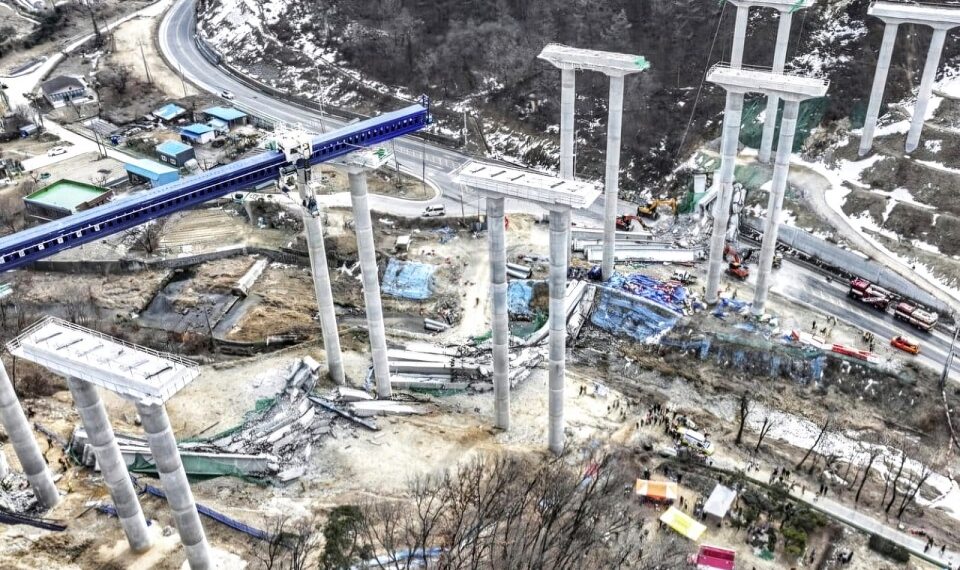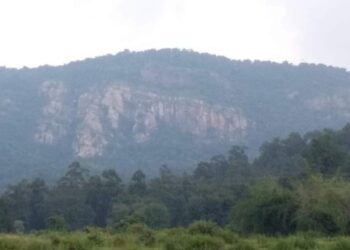Dhanada K Mishra, Hong Kong, 9 March 2025
We have seen many safety related incidents in India in recent past. Even developed countries like South Korea are not immune from this scourge of engineering. The recent bridge collapse in Anseong, South Korea, which claimed four lives—including two Chinese nationals—and left six injured, underscores a grim reality: despite decades of engineering advancements, preventable infrastructure failures persist. This tragedy mirrors the 1994 Seongsu Bridge disaster in Seoul, where 32 lives were lost due to structural negligence. These incidents, separated by three decades, reveal systemic flaws in construction practices, maintenance protocols, and regulatory oversight. However, emerging technologies like RaSpect’s AI-powered inspection systems offer a path forward, combining deep learning, digital twins, and real-time monitoring to transform how we safeguard critical infrastructure.
The 1994 Seongsu Bridge collapse stemmed from a lethal combination of faulty welding, rusted extension hinges, and deferred maintenance. Radiographic testing post-collapse revealed that 110 of 111 structural connections were defective, with welds penetrating just 2–8 mm into 18 mm steel beams. The bridge’s deterioration had been flagged in maintenance reports months before the disaster, but these warnings were ignored due to bureaucratic inertia and corruption. Similarly, the 2025 Anseong collapse occurred at a Hyundai Engineering construction site, raising questions about contractor accountability and workplace safety standards in South Korea, where over 8,000 work-related deaths were recorded from 2020–2023.
Both collapses reflect a pattern of prioritizing rapid urbanization over long-term safety. The Seongsu Bridge was part of a 1970s push to develop Gangnam, Seoul’s now-affluent southern district, under military dictator Park Chung Hee. This “build-first, inspect-later” mentality persisted into the 2020s, as evidenced by the Anseong incident’s proximity to political turmoil—the impeachment hearings of ousted President Yoon Suk Yeol, who faces charges related to authoritarian overreach. Legal proceedings after the 1994 disaster saw 17 officials convicted, but suspended sentences and corporate dissolution (e.g., Dong Ah Construction’s 2001 bankruptcy) did little to deter future negligence.

South Korea’s infrastructure boom in the 1970s–1990s has left a legacy of aging bridges and tunnels. The Seongsu Bridge, designed for a 50-year lifespan, showed critical rust damage after just 15 years. Today, similar risks lurk beneath fresh concrete: the Anseong collapse involved a bridge under construction, suggesting flaws in modern engineering practices. Traditional inspection methods—visual checks, manual measurements—are ill-equipped to detect subsurface corrosion or microfractures, especially in complex steel-truss designs.
Contractors often cut corners to meet deadlines, as seen in the Seongsu case, where rushed welding by inexperienced subcontractors led to catastrophic fatigue failure. Hyundai Engineering’s apology after the Anseong incident hints at similar pressures. Human inspectors, no matter how skilled, cannot process the terabytes of data generated by vibration sensors, LiDAR scans, or drone footage—a gap that invites oversight.
RaSpect’s AI-powered platform creates dynamic digital twins of bridges, updating in real time via IoT sensors, drones, and 3D imaging. Unlike static BIM models, these twins simulate stress loads, corrosion rates, and traffic patterns, flagging anomalies invisible to the human eye. For example, had the Seongsu Bridge been monitored by RaSpect’s system, algorithms would have detected the incomplete welds during construction and predicted their failure timeline using finite element analysis.
RaSpect’s convolutional neural networks (CNNs) analyze decades of inspection imagery, learning to distinguish harmless surface cracks from critical structural threats. In the Anseong case, where Hyundai Engineering’s site reportedly lacked adequate quality controls, RaSpect could have cross-referenced weld integrity data against ISO standards, alerting supervisors before concrete was poured.
By digitizing maintenance records and audit trails, RaSpect ensures transparency. Blockchain-integrated logs could prevent the document forgery that plagued the Seongsu investigations, where officials falsified safety reports. Contractors like Hyundai Engineering would face real-time liability, as AI-generated compliance scores become part of bidding processes—a system already piloted in Singapore’s Smart Nation initiative. South Korea’s National Fire Agency must mandate AI-augmented inspections for all critical infrastructure, subsidizing SMEs through public-private partnerships.
AI doesn’t replace inspectors—it empowers them. Upskilling programs, like those launched by the EU’s AI Infra project, can transition field crews from manual measurers to data analysts. The US, where 47,000 bridges are structurally deficient, offers a cautionary tale. RaSpect’s scalability—processing 1,000+ inspection images in quick time —makes it viable for both South Korea’s dense cities and emerging economies. Pilot projects in Vietnam’s Mekong Delta have already reduced bridge maintenance costs by 40% using similar AI tools.
The Anseong and Seongsu tragedies are not isolated failures but symptoms of a broken system. AI-driven approach transforms infrastructure management from a reactive gamble to a predictive science. By marrying digital twins with deep learning, we can honor the 36 lives lost in these collapses—not with plaques, but with bridges that stand the test of time.

As acting president Choi Sang Mok mobilizes rescue efforts in Anseong, let us also mobilize technology to ensure such scenes never repeat. The blueprint exists; the tools are ready. What remains is the will to build smarter, inspect deeper, and prioritize people over expediency. Engineers, builders, government regulators in India can take note and adopt technology to prevent future catastrophes waiting to happen.







